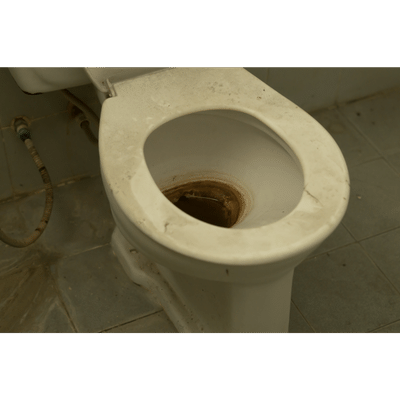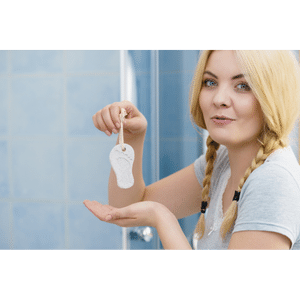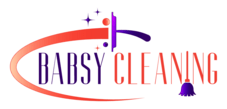How to remove limescale from toilet bowls

This article has a couple of amazing ways on how to remove limescale toilet bowls for readers. Whether you're a homeowner who has an incoming water supply that results in limescale build-up or you are a cleaner. It's frustrating to remove a limescale full of dirt from the toilets. It's even worse when you're a professional cleaner working on an hourly basis for your client. Let's say you need to complete a cleanup work within four hours. And in front of you, there is this old looking toilet bowl with a lot of limescale. You better think twice, because it's going to take longer if you don't know the logic to clean it up. Our professional cleaners have combined a few hacks to help you clean off limescale from toilets.
Before we move on, let's discuss the science behind limescale and what limescale is. Limescale is a hard, white deposit (chalky substance) that can build up on pipes and other surfaces in your home. It's a sign of hard water because it's composed of calcium carbonate and other minerals. Limescale develops when water flows over surfaces such as pipes and heating elements. Leaving behind a deposit of calcium carbonate and other minerals is the mineral-rich water.
Sometimes you may not see limescale. It's a common occurrence that you can feel it. Gritty pipes can make it difficult to clean surfaces like sinks and toilets. Limescale is a nuisance, but it's not harmful to your health. Removing it can be a challenge and can impact the efficiency of your plumbing. Although one of the best ways to prevent limescale is to flush the toilet each time you use it. This will help loosen any build-up and make it easier to scrub away. Preventing limescale buildup is possible with a few steps if you have hard water. Installing a water softener can remove minerals from the water. You can also use less water, and avoid using hot water, as this will help prevent the build-up of limescale.
The amazing methods on how to remove limescale from toilet bowls
Now that you know all about limescale, what causes it, and how to prevent it. Let's move to the real topic of the article, how to remove it from toilet bowls. Whether your toilet bowl looks a bit worse for wear. It's time to act and make it look fresh and clean again! Regular cleaning of your toilet bowl is essential, as a buildup of dirt and grime can encourage bacterial growth and spread germs.
To get your toilet bowl sparkling, here are ten simple steps to follow:

- The first step is to pour a cup of white vinegar into the bowl. The bowl can be sparkling easier with the help of this acidic liquid that breaks down deposits.
- To eliminate any stubborn stains, make sure to scrub the sides and bottom of the bowl. To do this, use either a scrub brush with bristles or a non-scratch sponge.
- Then sprinkle plenty of baking soda in the bowl. Let it sit for a few minutes, then use a brush to scrub the bowl and rinse.
- After scrubbing is done, add a cup of bleach to the bowl. Allow this to sit for around 30 minutes.
- To remove any remaining dirt or residue, use a toilet bowl cleaning brush. Make sure you enter every corner of the bowl for a full cleaning.
- If the bowl is still dirty, try adding some washing-up liquid and boiling water.
- Give it a few minutes to dry before scrubbing with the brush.
- If you observe that the bowl has a peculiar smell. Try to combine a piece of baking soda and 2 pieces of white vinegar.
- Allow it to bubble and fizz for a few minutes before brushing the sides and bottom of the bowl with a brush.
- The last step is to flush and clean the toilet with a bottle of specialized toilet cleaner. These ten effortless steps will make your toilet bowl look its best and free of dirt and grime in no time.
Ten limescale remover cleaning products you can use to get your toilet bowl sparkling at home.
As far as cleaning our toilets is concerned. Nothing is more repulsive than these stubborn scales and filth deposits. While there are numerous products on the market claiming to remove limestone from your toilet with ease. A few stand out as the best of the best. Let's show you ten lime-scale cleaning products that can get your toilet bowl sparkling clean.
- Lime-A-Way: One of the most popular options on the market is this product. The spray clings to the sides of the toilet bowl, allowing for maximum contact with limescale deposits.
- LimeX Xtra Lime Remover: This is an effective liquid limescale remover. Not only does it form a foam barrier so it can dissolve with effectiveness. But it also removes even the toughest deposits.
- Tilex: It is a household product that can eliminate limescale deposits in both bathrooms and kitchens. This product will dissolve even the most stubborn deposits, and it's safe to use on toilet bowl surfaces.
- CLR: A liquid cleaner that has a high concentration and is designed to tackle tough stains much quicker. It's one of the most well-known, tested, and genuine limescale removers on the market, and it's usually quite effective.
- Lazy Cheap Spray Cleaner: This is a product that has been in existence for a long time. Using it with a toilet brush is highly recommended and it is effective in removing limescale and other difficult-to-remove grime.
Another 5 of the excellent cleaning product to clean toilet bowls
- White King Grout & Tile Cleaner & Limescale Remover: Despite its marketing as a grout and tile cleaner, this product can effectively remove limescale toilet bowls. The spray bottle is neat, and you can use it to lightly spray the interior of your bowl for effective results.
- Ecover All-in-One Toilet Cleaner: The main purpose of this product is to clean and descale toilets without the use of harsh chemicals. The cleaners it uses are made from plants that are safe for the environment, and it can also remove tough limescale deposits.
- Eco Green Limescale Remover: The aim of this product is also to remove limescale toilet bowls without the use of harsh chemicals. It's safe to use on delicate surfaces and has natural ingredients that won't leave a strong chemical scent.
- Lime-A-Way Power Gel: Similarities exist between this product and the other Lime-A-Way products. Despite this, it is a gel that is easy to use. The thick gel penetrates the sides of the toilet bowl, enabling it to reach deeper deposits.
- Easy-Off Heavy Duty Limescale Remover: The spray bottle of this product is intended to remove hard water scale and grime from surfaces around your toilet. To achieve scale-free results, just spray around the bowl and let it sit for a few minutes.
Lists of how to use a Pumice Stone to remove the limescale toilet bowl

Getting rid of limescale from the toilet bowl can be a challenging task to get rid of, as we all know. We have provided readers with an easy-to-use tip on how to clean their toilet thanks to our cleaner experts. To take care of it, you can use a pumice stone, which is both easy and inexpensive. To prevent damage to your toilet bowl and make it look like new, this natural solution is an environmentally friendly solution. Here is a step-by-step guide for using a pumice stone to remove limescale from the toilet bowl.
- Gather all of your supplies. To be safe, make sure to have rubber gloves, safety goggles, a bucket, a pumice stone, a scrub brush, a plastic putty knife, and baking soda.
- Protect yourself by wearing your rubber gloves and safety goggles.
- Fill the bucket with enough water to cover the pumice stone.
- Place the pumice stone in the water for five minutes.
- If possible, wear an extra pair of rubber gloves and safety goggles. If you don't have any more gloves, the one you already have will suffice for the task.
- Use the pumice stone to scrub the surface of the toilet bowl in a circular motion. Make certain to cover the entire area.
- Use the plastic putty knife to remove any stubborn limescale build-up if necessary.
- To make the area cleaner, sprinkle baking soda over it.
- Scrub away any limescale build-up with the scrub brush.
- Clean the toilet bowl and dry it with a clean cloth or paper towel after rinsing it with clean water.
And that's it! Your toilet bowl is now clean and free of limescale thanks to your pumice stone! Getting the results that you're looking for may take a few attempts, but don't give up. Your toilet will look like new in no time with a bit of patience.
Break the Down Calcium Carbonate to Banish Limescale from toilets Forever
One of the most persistent challenges homeowners face is the battle against limescale buildup in their bathrooms. Here are five ways to transform your bathroom into a sparkling oasis using cutting-edge methods. The breakthrough technique revolutionizes the way we remove limescale from toilets, shower screens, and other water-prone areas.

Understanding the root cause of limescale is key to comprehending this revolutionary approach. Limescale composes of a compound that we know as calcium carbonate. This element gradually forms through the reaction between hard water, minerals and surfaces frequently exposed to water. By targeting the calcium carbonate buildup as its root cause, this innovative method targets limescale in its entirety.
A specially formulated cleaning solution can effectively disintegrate calcium carbonate deposits when allowed to sit for at least 15 minutes, or use it to sit overnight in severe cases. It has also proven helpful in removing limescale from shower screens and other hard water areas.
A simple process on how the acid in vinegar breaks down the calcium carbonate which then dissolves stubborn limescale.
- First, identify the areas in your bathroom that have problems and apply the solution throughout.
- Then, apply the tailored cleaning solution generously, allowing it sufficient time to work its magic.
- After the solution sits for a few minutes, calcium carbonate breaks down into harmless components, dissolving stubborn limescale.
What makes this method remarkable is its ability to penetrate the hardened layers of calcium carbonate. It effortlessly dissolves years of buildup. The result is a clean and limescale-free surface without the need for excessive scrubbing. You don't even need to use abrasive cleaners that could potentially damage your bathroom fixtures.
Also, this innovative technique not only removes limescale but also prevents its future recurrence. Say farewell to the tedious cycle of constant maintenance and cleaning by eliminating limescale's root cause - calcium carbonate deposits. Embrace a worry-free bathroom environment where your fixtures retain their pristine shine. Not only does it leave you with more time to relax, but enjoy your oasis of tranquility.
Remember, the solution to a sparkling clean bathroom has arrived, all thanks to the fight against calcium carbonate, the chemical compound that dampens bathroom fixtures.
Use lemon juice, Coca Cola, and sandpaper to remove limescale from toilet bowls

It can be a pain to remove limescale toilet rim and toilet bowl. Using lemon juice, Coca Cola, and sandpaper, you can remove it and prevent it from coming back with this simple hack! To get rid of limescale, simply apply lemon juice to the affected area and let it sit for a few minutes. Scrub the limescale off with a piece of sandpaper. To prevent limescale from coming back, just add a can of Coca Cola to the toilet bowl and let it sit for an hour before flushing. The Coca Cola acid has the potential to prevent limescale from forming in the first place!
If you are dealing with stubborn limescale stains, a little elbow grease can go a long way. We don't just want to provide you with instruction without any feedback. There is a table chart below. You can let the other readers know how helpful you find this article. Babsy Cleaning will always strive to make cleaning your home easier for you. And that is whether you want to spend your hard-earned money on professional cleaning services or not. A related topic you may want to read about is cleaning mold or how mould removal service work.
